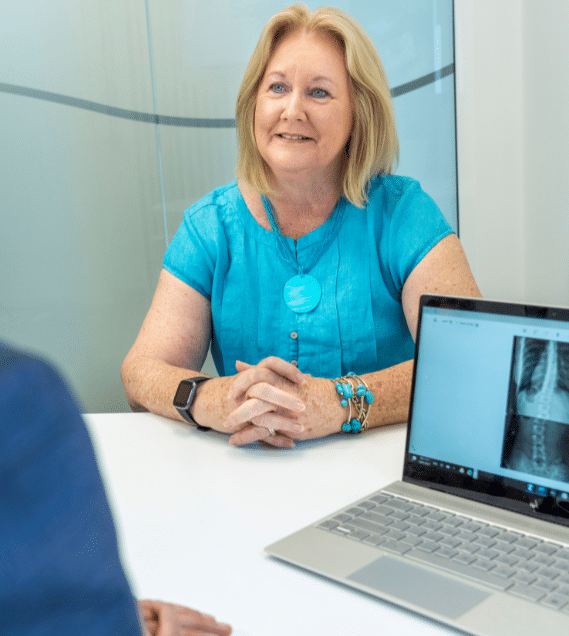Assess Posture
Scoliosis and kyphosis can be detected through physical assessment. The first scoliosis signs are often postural, for example, an uneven tilt of the shoulders or one side of the rib cage protruding more than the other. A thorough postural assessment by a clinician, including the Adams forward bending test, is usually enough to determine if further assessment is required which usually includes an X-ray.
You can also check and detect for early signs of scoliosis at home. The ScoliScreen App is a a free web-based screening tool for the signs of scoliosis. It has been created for educational purposes and its aim is to promote scoliosis awareness and the importance of early detection and treatment.
X-rays and the Cobb Angle
An X-ray is the only way to accurately diagnose and measure a scoliosis (or kyphosis). Only standing X-rays should be used as they show the true degree and alignment of the curve or curves while the patient is upright. Lying down X-rays are not as useful as the spine can be mispositioned and the true extent of the scoliosis minimized.
Once X-ray images have been taken, a type of measurement called the “Cobb angle” is used to assess the degree of the scoliosis. It is critical that any health professional assessing scoliosis is familiar and accurate with this measurement as it is then used to form recommendations for treatment options based on the degree of curve. For children, an X-ray is also fundamental to assess the bone age which gives the clinician useful information regarding future spinal growth and the risk of curve progression. In older adults, X-rays also play an important role in assessing spinal balance and the presence of any spinal instability.



